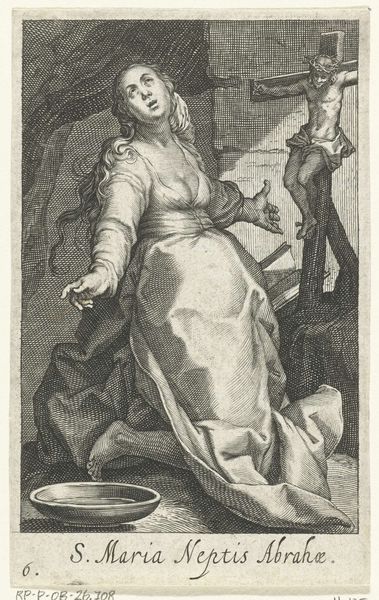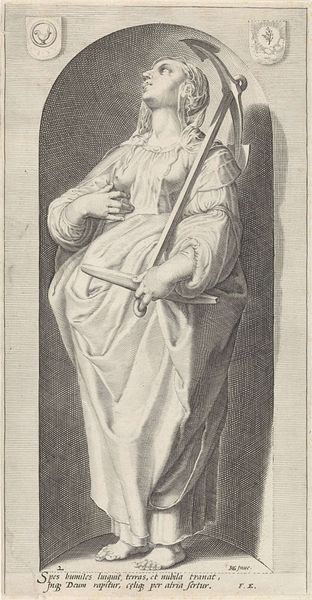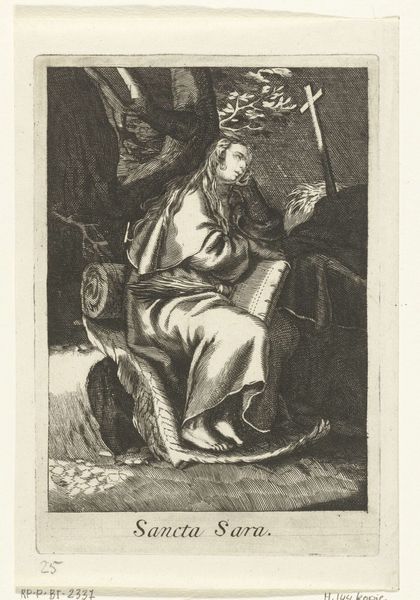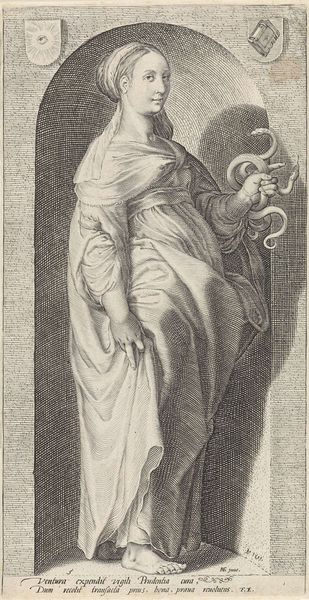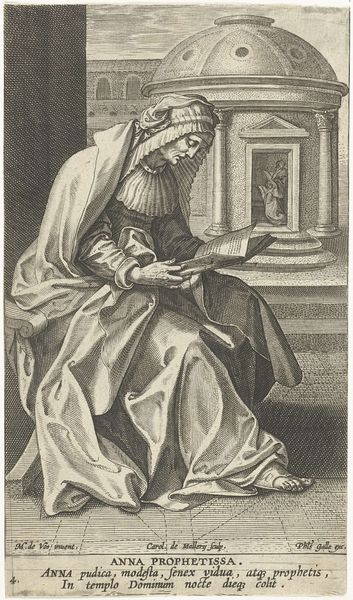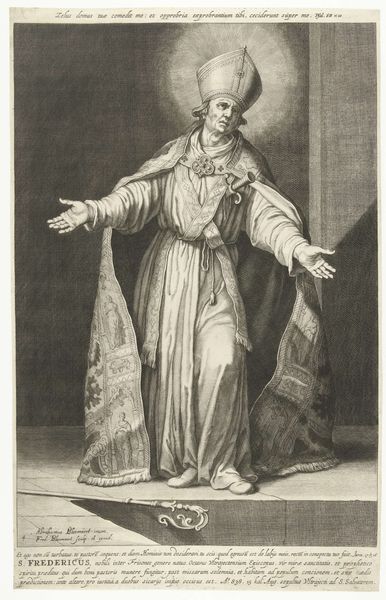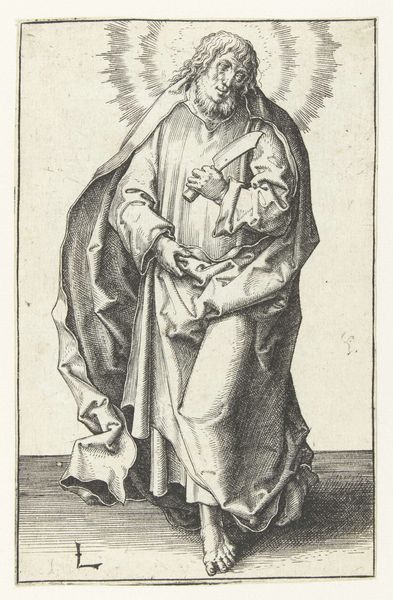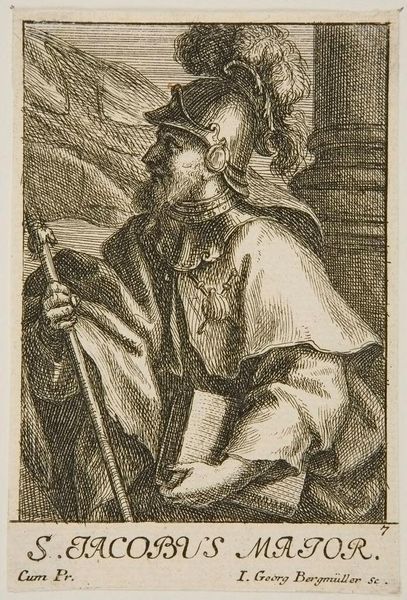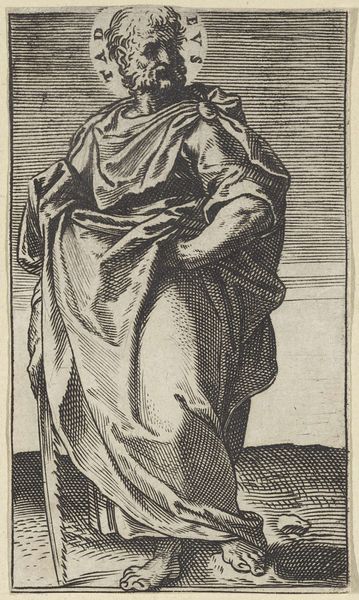
print, engraving
#
portrait
#
baroque
# print
#
old engraving style
#
figuration
#
line
#
engraving
Dimensions: height 143 mm, width 90 mm
Copyright: Rijks Museum: Open Domain
Editor: Here we have Boëtius Adamsz. Bolswert’s engraving, "Heilige Melania de Oudere als kluizenares," dating from around 1590 to 1619. It's a pretty detailed figural piece... very baroque, it seems. What strikes me most is the woman's intense expression. How do you read the composition of this engraving? Curator: Observe how the artist manipulates line and form to guide our eye. The subject is framed by a play of light and shadow—notice the dramatic chiaroscuro effect characteristic of Baroque prints. The diagonal lines of her garments lead the gaze toward her face, highlighting the tension. The materiality of the engraving, the very texture of the lines etched into the plate, contributes to the somber tone. Editor: I see what you mean about the lines; it does create a sense of depth, despite being a two-dimensional work. But what about the objects in the background, like that broken tree limb? Do those hold any significance? Curator: Perhaps. A tree limb can function as more than a simple background object. Ask yourself how the curve of that branch, its fractured appearance, echoes or contrasts with the figure’s posture, or overall mood? Editor: Interesting! It could be suggesting something broken, perhaps related to her emotional state... like a burden. I was only considering the surface until now. Curator: Precisely. Considering all elements working together enriches the experience of seeing. How has examining Bolswert's approach impacted your understanding? Editor: It’s taught me to look deeper into not just what’s represented but how, recognizing every line and shadow plays a key role. Curator: Indeed, this rigorous analysis gives way to new interpretations.
Comments
No comments
Be the first to comment and join the conversation on the ultimate creative platform.
